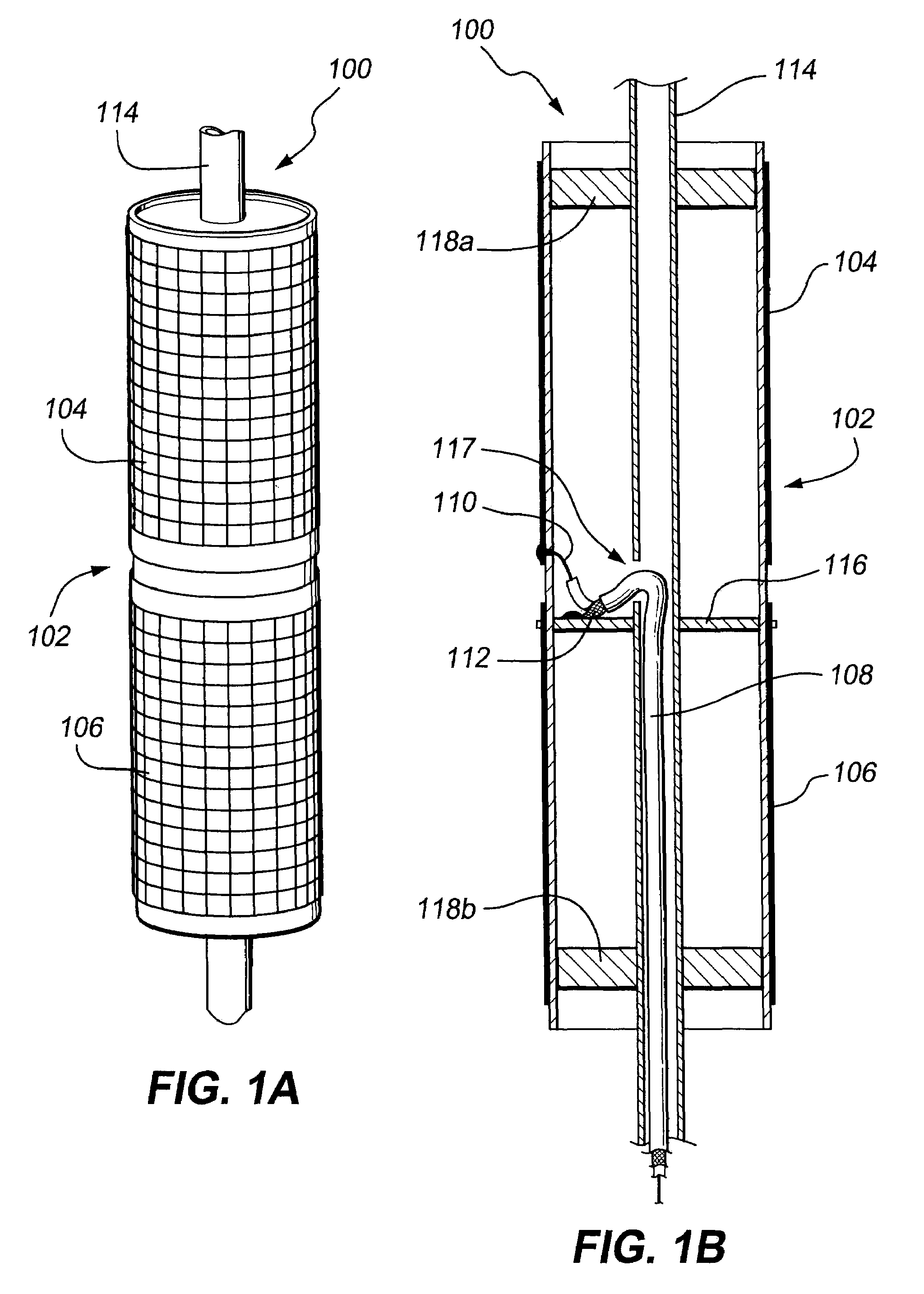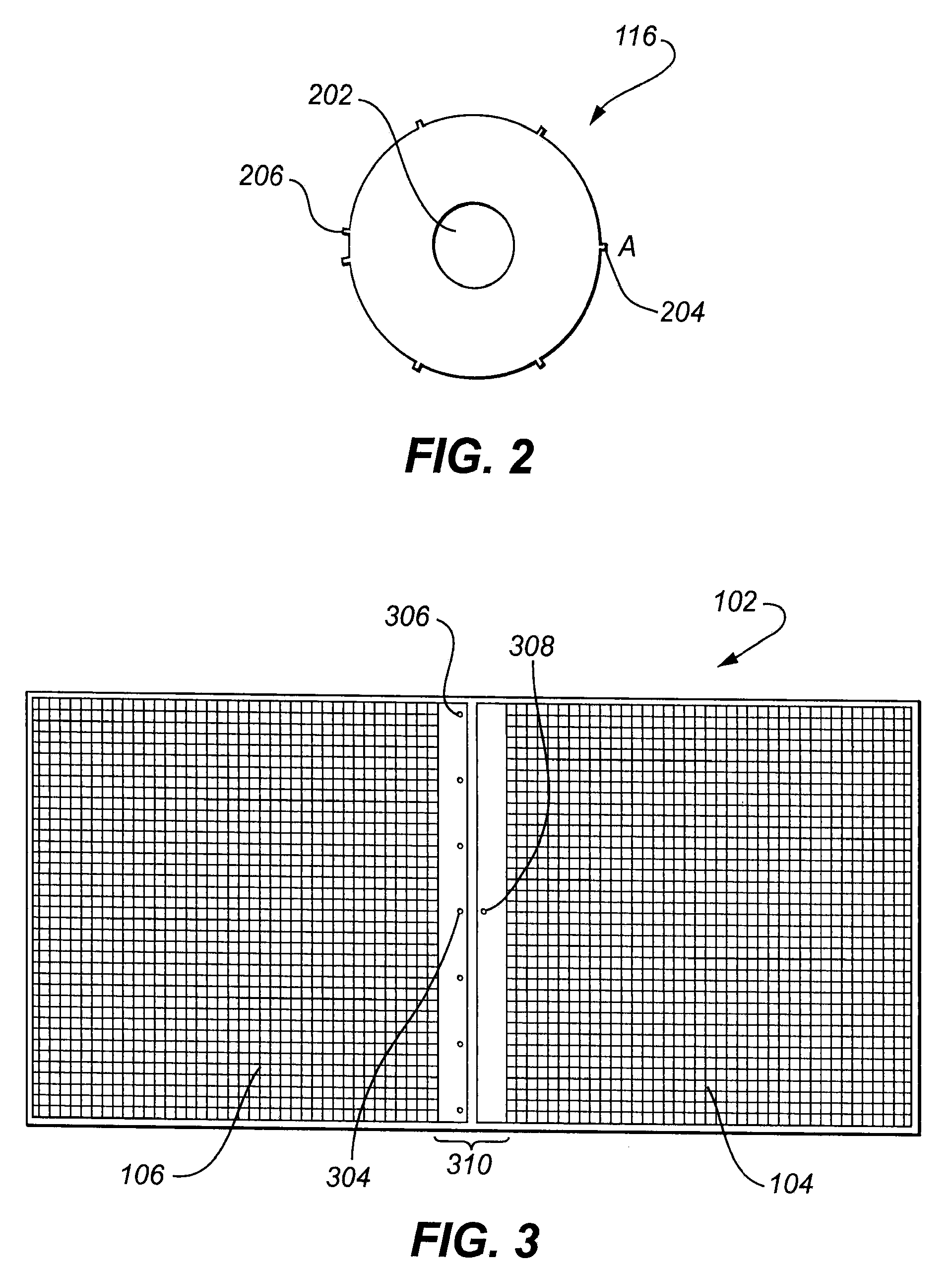Dipole antenna
a dipole antenna and antenna technology, applied in the direction of antenna arrays, electrical devices, radiation elements, etc., can solve the problems of affecting the performance of the series-fed antenna, so as to achieve stable grounding arrangement, suitable matching, and simple manufacturing methods
- Summary
- Abstract
- Description
- Claims
- Application Information
AI Technical Summary
Benefits of technology
Problems solved by technology
Method used
Image
Examples
Embodiment Construction
[0050]Referring firstly to FIGS. 1A and 1B there is illustrated, in perspective and cross-sectional views respectively, an antenna 100 according to an embodiment of the present invention. The antenna 100 includes an integral dipole antenna member 102, having first and second radiating elements 104, 106 disposed on the surface of a flexible substrate, which has been formed into a substantially cylindrical shape. The antenna 100 further includes a feed network, including at least the coaxial cable feed line 108 having first, central, conductor 110 and second, outer, conductor 112.
[0051]It will be appreciated that, as used herein, the terms “feed”, “feed line”, “feed conductor”, “feed network” and so forth are intended to include bi-directional as well as uni-directional circuits, encompassing arrangements for the transmission of signals both to and from the antenna 100. As such, coaxial feed line 108 is provided to conduct signals to and from the radiating elements 104, 106.
[0052]The ...
PUM
 Login to View More
Login to View More Abstract
Description
Claims
Application Information
 Login to View More
Login to View More - R&D
- Intellectual Property
- Life Sciences
- Materials
- Tech Scout
- Unparalleled Data Quality
- Higher Quality Content
- 60% Fewer Hallucinations
Browse by: Latest US Patents, China's latest patents, Technical Efficacy Thesaurus, Application Domain, Technology Topic, Popular Technical Reports.
© 2025 PatSnap. All rights reserved.Legal|Privacy policy|Modern Slavery Act Transparency Statement|Sitemap|About US| Contact US: help@patsnap.com



